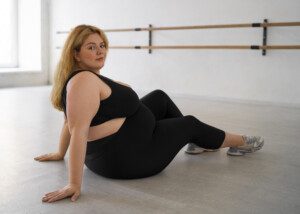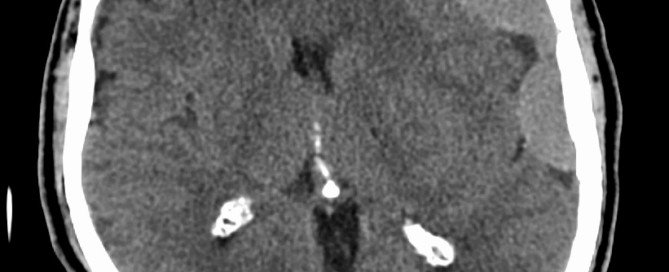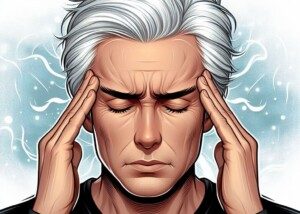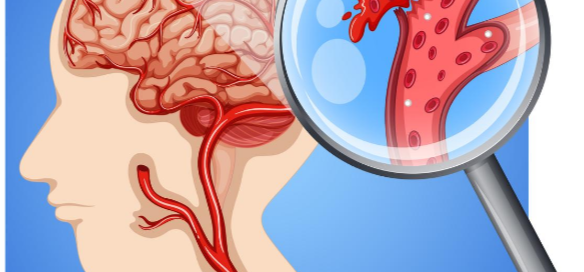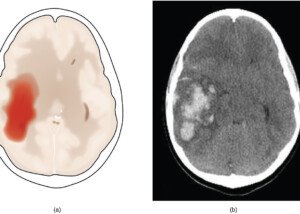Why Don’t Stomachs of 600 Pound Life People Ever Rupture?

There are cases of people who’ve fatally ruptured their stomach from eating enormous amounts of food in a short period of time.
The “600 Pound Life” subjects apparently have not suffered this fate. (more…)
Can Chronic Subdural Hematoma Increase Risk of Alzheimer’s?

You may already know that a chronic subdural hematoma can cause permanent physical disability.
But what about an increased risk of Alzheimer’s disease?
Can the bleeding that contacts the brain set in motion a chain of biochemical events that ultimately lead to the development of Alzheimer’s disease or some other form of dementia?
A chronic subdural hematoma is a gradual or slow bleeding in the brain that occurs over weeks, following some type of trauma such as hitting one’s head on a car door frame, a slip-and-fall or a whiplash injury that jars the brain.
A cSDH is far more likely to occur in elderly people because, due to age-related brain shrinkage, there’s more room between the brain and dura, making it easier for veins to be torn.
However, it can also happen from head trauma to people in their 50s and 60s.
Blood thinning drugs, too, can cause a cSDH in elderly people.
Symptoms of Chronic Subdural Hematoma
The symptoms resemble those of a stroke and include cognitive impairment.
The patient won’t have all the possible symptoms since symptoms depend on the location of the bleeding.
However, a gradual onset of what seems like early Alzheimer’s can definitely be a symptom in an elderly person who, several weeks prior, banged their head from a fall or even just “nicked” it on an open cupboard door.
In fact, sometimes the diagnosis is highly suspicious for dementia —until a CT scan reveals the bleeding.
So on one hand, it’s accurate to say that a chronic subdural hematoma can cause symptoms mimicking dementia or Alzheimer’s disease.
But once the collection of blood and fluid is drained via a burr hole procedure, the patient usually has a full recovery. The “dementia” was temporary.
But is it possible for this insult to the brain tissue to raise the risk of future development of Alzheimer’s disease?
”Chronic subdural hematoma is very common in people within the older age group,” says Dr. Urvish K. Patel, MD, MPH, a research associate in the Department of Neurology at Creighton University School of Medicine/CHI Health.
“Due to an ageing population, chronic subdural hematoma is projected to become the most common adult neurosurgical diagnosis.
“Due to oxidation-reduction reactions in chronic subdural hematoma and exerting its effects using cytokines and inflammatory mediators, cSDH leads to neurotoxicity and inflammation-related brain atrophy.
“In such circumstances, it increases the risk of Alzheimer’s disease and dementia.”
Causes of Alzheimer’s Disease
In under five percent of cases, a genetic variant that’s present since birth will lead to the disease, though the mechanism is not known.
In the remaining 95 percent of cases, nobody knows just what exactly causes Alzheimer’s. What’s known, however, is what it’s associated with.
• Plaques. It’s believed that the presence of beta-amyloid plaques kills brain cells, but again, the mechanism of cell death is not known.
• Tangles. A protein called “tau” is key to the system of support and transport of nutrients to brain cells.
In the brains of Alzheimer’s patients, tau protein is tangled up inside brain cells, crippling the system.
Commonly Known Risk Factors for Alzheimer’s
• Age 65+
• Immediate family member has the disease.
• MCI: mild cognitive impairment in older age that’s more than what would be expected for that age.
• History of severe head trauma (e.g., car accident, ladder fall).
• Lack of exercise
• Obesity
• High cholesterol
• High blood pressure
• Smoking
• Poorly managed type 2 diabetes
• Lack of vegetables and fruits
• Sub-high school education level
Age-related changes in the brain are also suspect as causative factors in Alzheimer’s. These include:
• Brain shrinkage
• Inflammation
• Free radicals
• Breakdown of a cell’s energy production
Delayed Treatment of a Chronic Subdural Hematoma
This heightens the chance of permanent deficits, as was the case with a 60-something man at my gym who was initially misdiagnosed a month after he fell and hit his head, then finally properly diagnosed a month after that.
By then the continuing buildup of blood and fluid in his brain had caused irreversible damage to the right side of his body — but left him cognitively intact.
A cSDH can be missed on a CT scan.
For optimal brain health, one should avoid the modifiable associated risk factors with Alzheimer’s.
 Dr. Patel’s areas of interest are outcomes and survival studies and clinical trials in neurology, neuroepidemiology and translational medicine research.
Dr. Patel’s areas of interest are outcomes and survival studies and clinical trials in neurology, neuroepidemiology and translational medicine research.
 Lorra Garrick has been covering medical, fitness and cybersecurity topics for many years, having written thousands of articles for print magazines and websites, including as a ghostwriter. She’s also a former ACE-certified personal trainer.
Lorra Garrick has been covering medical, fitness and cybersecurity topics for many years, having written thousands of articles for print magazines and websites, including as a ghostwriter. She’s also a former ACE-certified personal trainer.
Can Anabolic Steroids Cause Bleeding in the Brain?
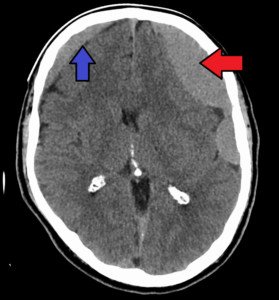
Long-term use of anabolic steroids can cause damage to the brain.
There are many causes of bleeding in the brain.
Some of these bleeds occur slowly and some are instantaneous and thus immediately life-threatening. (more…)
Early ALS Muscle Atrophy vs. Benign Atrophy Appearance
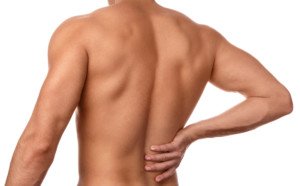
“It can be difficult to distinguish between early ALS atrophy and normal atrophy,” says Bonnie Gerecke, MD, MD, director of the Neurology Center at Mercy in Baltimore.
The typical course goes as follows:
• You notice a muscle has been twitching, such as in the calve, hamstring, chest or eyelid.
• After getting annoyed enough, you google “cause” of twitching muscles.
• ALS sites appear in the search results and grab your attention.
• You begin reading one ALS site after another, and all say that “muscle twitching” is a symptom, but they also say that “muscle atrophy” is a symptom.
• You then begin checking your muscles for signs of atrophy.
• You begin discovering signs of atrophy, such as one calve is bigger than the other, or there’s a “dent” in the front of your thigh.
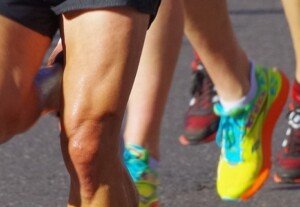
Benign thigh dents take on a variety of forms.
Atrophy means shrinkage of muscle due to disuse. This happens in healthy people all the time, and can be quite noticeable depending on the circumstances.
We’ve all seen the atrophy of a limb after a cast for a broken bone, that’s been in place for weeks, is finally removed.
Telling the Difference Between ALS Atrophy and Benign
“Early ALS atrophy may be more focal,” says Dr. Gerecke.
“This means that it may start in a specific muscle group, such as the small muscles of the hand,” continues Dr. Gerecke.
“It then spreads to affect other muscles of the same limb, for example.”
So for instance, ALS may begin in the foot, then locally spread, being confined to the lower leg.
Eventually the other side of the body will become affected, most likely beginning with the opposite foot and lower leg.
ALS atrophy does not strike the entire body at the same time. It begins very locally.
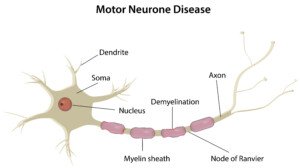
Shutterstock/joshya
Dr. Gerecke explains, “Normal atrophy such as that associated with aging tends to be more symmetrical and diffuse.”
But what if you notice local atrophy?

Well, here’s the thing about this. You must ask yourself what proof you have that what you’re seeing is actually shrinkage of muscle.
If you frantically inspect your body in the mirror, you just might find what you’re looking for: signs of atrophy – or rather, what you THINK are signs, such as:
• One calve is smaller than the other.
• There’s a depression of skin below the right collarbone but not the left.
• One foot is slightly larger than the other.
• One forearm is smoother than the other.
• The veins in the top of one foot are more visible than in the other.
• One thigh has a dent.

Shutterstock/Motortion Films
You even confirm some of the size differences with a measuring tape. You’re convinced you have localized atrophy.
Dr. Gerecke says, “Normal atrophy is also not as pronounced as pathological atrophy associated with ALS.”
You may be thinking that ALS, like any degenerative disease, starts out very small; that it has a very early stage – and that during this stage, the atrophy would actually not be pronounced.
But if it’s ALS, it won’t be long before the wasting becomes increasingly obvious – and accompanied by weakness.
In fact, the weakness will very likely come before visible signs of muscle shrinkage.
So you have to keep reminding yourself of a few things:
• If you’re healthy, time passage will become very reassuring, since in a healthy body, there is no progression of visible or functional pathology.
• Parts of your non-dominant limbs are bound to be noticeably smaller than the dominant ones, but smaller doesn’t necessarily mean atrophied due to less use.
• You may find that your non-dominant left lower leg is smaller than your right, but that it’s also the leg you jump off of when doing single-leg jumps across a water puddle, and that your right leg was never the better one at leaping.
• The body is naturally asymmetrical. There are dips, dents and depressions on one side that are not on the other.
You’re not a Greek statue. You’re imperfect. There’s going to be asymmetry!
So though the visible distinction between early ALS and benign atrophy may be difficult to tell, just hold tight and realize that you are, from a statistical standpoint, panicking for no reason whatsoever.
Let time passage work its wonders on you.

Dr. Gerecke has a special interest in ALS, myasthenia gravis, myopathy/muscular dystrophy, peripheral neuropathy and radiculopathy. She is board certified in general neurology and neuromuscular medicine.
 Lorra Garrick has been covering medical, fitness and cybersecurity topics for many years, having written thousands of articles for print magazines and websites, including as a ghostwriter. She’s also a former ACE-certified personal trainer.
Lorra Garrick has been covering medical, fitness and cybersecurity topics for many years, having written thousands of articles for print magazines and websites, including as a ghostwriter. She’s also a former ACE-certified personal trainer.
.
Top image: Shutterstock/BLACKDAY
Why Quitting Smoking after a TIA Is So Important

Do whatever it takes to quit smoking if you’ve had a TIA. Smoking damages the blood vessels in the brain.
But not only that, it also causes conditions that are independent risk factors for transient ischemic attack. (more…)
Should Family Members of Brain Aneurysm Patient Have MRI?

If you just learned a family member has a brain aneurysm, you definitely should schedule an MRI scan of your brain, as there is a familial link to this condition.
This genetic link was shown in a large study (Neurology. 2013 Jun 4;80(23):2154-65).
The paper states: “Our comprehensive meta-analysis confirms a substantial genetic contribution to sporadic intracranial aneurysm.”
You Learn an Immediate Family Member Has a Brain Aneurysm
• You should undergo an MRI, whether that first-degree is your parent, your sibling or your child.
• First discuss the MRI screening with your primary care physician.
“We’ve had situations where an adult in her 40s was found to have a cerebral aneurysm,” says Curtis Pavlick, a cerebrovascular physician assistant, in a report at clevelandclinic.org.
“On the suggestion that others be checked, her sister was found to have one and their mother was found to have one.”
Pavlick points out that the risk increases if you and/or other family members have risk factors for a brain aneurysm, like high blood pressure and smoking. Other risk factors are unmanaged diabetes and street drug use.
So how is the aneurysm discovered in the original family member in the first place? You’ve heard the saying, “He had an aneurysm and died.”
An aneurysm is a bulge in a blood vessel; the bulge has weakened walls that are at risk for dissecting.
People don’t “have an aneurysm and die.” They have a ruptured aneurysm – meaning, it dissected or burst, resulting in a hemorrhage.
These bulges usually have no symptoms and can be stable for many, many years—and in fact, people could live well into old age without any incident.
Only upon autopsy is the aneurysm discovered, and there may even be two or three of them – all silent for that person’s entire long life.
Most are discovered by accident when the head is scanned (CT, MRI) for an unrelated reason such as head trauma from a car wreck.
So that family member is then discovered to have a silent aneurysm. Their parents, siblings and kids should undergo an MRI. An MRI emits no radiation.
If an MRI detects an aneurysm, it may or may not require treatment, but at a minimum, will require monitoring. In other words, not all aneurysms are time bombs.
 Lorra Garrick has been covering medical, fitness and cybersecurity topics for many years, having written thousands of articles for print magazines and websites, including as a ghostwriter. She’s also a former ACE-certified personal trainer.
Lorra Garrick has been covering medical, fitness and cybersecurity topics for many years, having written thousands of articles for print magazines and websites, including as a ghostwriter. She’s also a former ACE-certified personal trainer.
.
Top image: ©Lorra Garrick
Sources:
health.clevelandclinic.org/2014/09/if-your-relative-has-an-aneurysm-you-might-have-one-too/
ncbi.nlm.nih.gov/pubmed/23733552
Exercise Guidelines after Brain Aneurysm Coiling or Clipping

Are you a weightlifter or runner with an unruptured, newly coiled aneurysm?
Just what does “return to full activities” really mean?
Exercise is encouraged by surgeons who clip or coil brain aneurysms, but the term “exercise” needs to be defined.
Patient Recovered from Coiling or Clipping of an Unruptured Brain Aneurysm: Exercise Guidelines Including Weightlifting
“Six months after treatment, I do not put my patients on any restrictions,” says Farhan Siddiq, MD, a neurosurgeon with University of Missouri Health Care.
“There are no activity or weight-limiting restrictions,” continues Dr. Siddiq.
“I encourage patients to resume normal life and be active. I encourage daily exercise of whatever degree they prefer. I have not had any patients have any problems with that.”
So if you were, prior to the discovery of your cerebral aneurysm, a bodybuilder, kickboxer, Crossfitter, skier, rock climber, mountaineer or marathon runner, you can resume these activities full-force after the six month mark.

If you were never into any intense exercise, you can certainly take it up, be it powerlifting, high intensity interval training, judo, whatever you please.
Don’t let your coiled or clipped aneurysm stop you.
Dr. Siddiq adds, “If coiling or clipping is inadequate or if a patient may require later treatment, then I might recommend some restrictions; but that is very rare.”
What About Short Term Exercise Guidelines for Clipped or Coiled Brain Aneurysms?
Avoid lifting anything more than 10 pounds for three days after the coiling or clipping.
It’s important to discuss lifting and activity restriction with your doctor for the short-term.
This includes a month out, and six months out, from the procedure.
But remember, you’ll need to wait six months, depending on the intensity of the exercise, to resume certain high-level activities.
This excludes easier activities such as gardening and brisk walking.
But you would have to wait six months to resume pushing your limits with big strength training moves such as the barbell squat and bench press.

Dr. Siddiq is fellowship-trained in endovascular surgical neuroradiology and vascular neurology from the University of Minnesota Medical Center. His areas of special focus also include brain aneurysms and carotid disease.
 Lorra Garrick has been covering medical, fitness and cybersecurity topics for many years, having written thousands of articles for print magazines and websites, including as a ghostwriter. She’s also a former ACE-certified personal trainer.
Lorra Garrick has been covering medical, fitness and cybersecurity topics for many years, having written thousands of articles for print magazines and websites, including as a ghostwriter. She’s also a former ACE-certified personal trainer.
.
Top image: vecteezy.com
Sources:
thewaltoncentre.nhs.uk/uploadedfiles/documents/Elective%20Coil%20occlusion%20of%20brain%20aneurysm%20Patient%20Information.pdf
mayfieldclinic.com/PE-Coiling.htm
Life after a TIA: 5 Steps to Kill the Fear of Another One

Once you’ve had a transient ischemic attack, life as you know it will never be the same — but there are five measures you can take to regain power over your life. (more…)
Will the DASH Diet Help Prevent a Second TIA?
If you’ve suffered from a TIA, perhaps you’re wondering if the DASH diet will help prevent another one of these mini-strokes, which can mean a massive stroke in the near future.
Can an Aneurysm Cause Very Brief Stabbing Head Pain?
Can your “jabs and jolts” stabbing head pain be caused by an aneurysm that’s about to rupture?
Aneurysm pain from rupture is classically a “thunderclap” headache: sudden in onset, and excruciating, the worst head pain ever. (more…)


